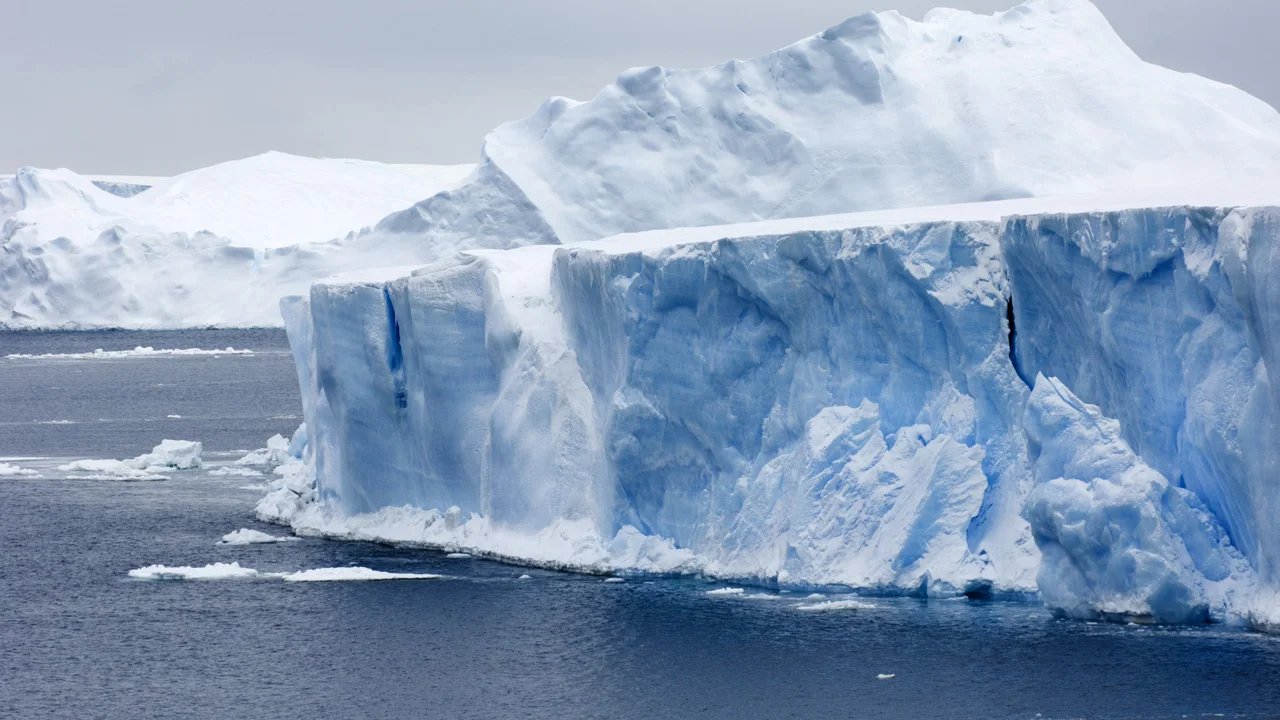
The next 'largest iceberg in the world' just broke away from Antarctica
This massive chunk of glacial ice, now named Iceberg A-76, broke free from Antarctica's second largest ice shelf.
An immense iceberg broke away from Antarctica over the past week, becoming the new largest iceberg in the world.
Scientists with the British Antarctic Survey and the US National Ice Center confirmed a new iceberg that calved off from the Ronne Ice Shelf on May 14, 2021. Now floating free in the Weddell Sea, the massive block of glacial ice was initially spotted by Dr. Keith Makinson of the British Antarctic Survey and later confirmed using satellite imagery from the Copernicus Sentinel-1 mission. It has been named A-76.

Iceberg A-76 as of May 16, 2021, imaged by the Copernicus Sentinel-1 mission. According to the European Space Agency, the iceberg is slightly larger than the Spanish island of Majorca. Credit: ESA (CC BY-SA 3.0 IGO)
When iceberg A-68 finally broke apart late last year, the mantle of 'largest iceberg in the world' passed to a chunk of ice that has been around for over three decades. Iceberg A-23 broke away from the Filchner Ice Shelf in August of 1986. As of January 2021, the primary part of it — iceberg A-23A — was still over 3,800 square kilometres in area. At that time, the Guiness Book of World Records labelled A-23A as the current largest iceberg in the world. It has been around so long and retained that much of its area because it grounded itself in late 1991. Essentially, it became stuck not far from where it formed and remained there, in frigid waters, for nearly 30 years. Only in the mid-2020 did it start to drift north.
Based on satellite imagery, iceberg A-76 is estimated to have a total area of 4,320 square kilometres. Thus, it easily takes the title of 'largest iceberg in the world' from A-23A.

Imagery from May 10–15, taken by NASA's Suomi NPP satellite, shows the calving of iceberg A-76 from the Ronne Ice Shelf. Credit: NASA Worldview/Scott Sutherland
The Ronne Ice Shelf is located along the southern shores of the Weddell Sea. It is the western part of the larger Filchner–Ronne Ice Shelf, which is split at its leading edge by Berkner Island. Filchner-Ronne, combined, covers a total area of around 430,000 square kilometres, and is second only to the Ross Ice Shelf, which has an estimated area of 487,000 square kilometres.
The last major calving events from the Ronne Ice Shelf produced iceberg A-38 in October 1998, which was roughly 5,600 sq km in size, and iceberg A-43 in February 2000. Both of these icebergs shattered shortly after they separated from the ice shelf. The fragments then floated up the Antarctic Peninsula and out into the Atlantic Ocean before disintegrating near South Georgia Island between 2004 and 2005.
Icebergs are named by the US National Ice Center, who assigns them a letter-number designation based on what part of Antarctica they originated from and when they formed. To qualify as a named iceberg, a chunk of ice must have an area of at least 500 square metres, be 30-50 metres thick, and at least 5 metres of that must extend above the water's surface.
According to the Antarctic Report: "Iceberg names are derived from the Antarctic quadrant in which they were originally sighted, divided in the following manner:
A = 0–90W (Bellingshausen/Weddell Sea) B = 90W–180 (Amundsen/Eastern Ross Sea) C = 180–-90E (Western Ross Sea/Wilkesland) D = 90E–0 (Amery/Eastern Weddell Sea)
They are then assigned a number in the order in which they are discovered. The first iceberg to calve in the Amundsen/Eastern Ross Sea, would be named B-1 accordingly. If that iceberg broke into larger pieces, it would be assigned a letter at the end of its name. So if the iceberg B-1 split into two parts, they would be named B-1A and B-1B, and so on."

This map of Antarctica divides the continent into the quadrants used to name icebergs. Credit: Ted Scambos/NSIDC/Scott Sutherland
The calving of A-76 is not necessarily linked directly to global warming.
Antarctic ice is increasingly vulnerable to warming ocean waters and changing weather patterns, and for some time, scientists have been raising the alarm regarding the amount of ice being lost from West Antarctica. However, since iceberg calving is part of the natural processes of an ice shelf, we cannot point to an event like this and say that this was caused by climate change.

A large tabular iceberg floats in the Weddell Sea, near Snow Hill Island, Antarctica. Credit: David Tipling/Universal Images Group via Getty Images
An uptick in the frequency of large iceberg formation would be a stronger indication that climate change was a direct factor. What happens after a calving event is significant, as well. The Larsen A and Larsen B ice shelves, near the tip of the Antarctic Peninsula, both disintegrated — in 1995 and 2002, respectively — following the calving of large icebergs.
For now, researchers will closely watch the Ronne Ice Shelf following this calving of A-76, to see how the ice shelf behaves in the aftermath.











